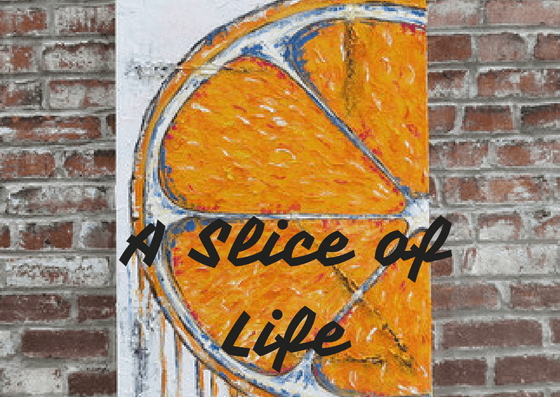Reading Time: 4 minutes
Ruchira traces the antiquity of biscuits, also the many uses of biscuit tins – exclusively for Different Truths.

The other day, while I sat sipping my morning cup of green tea and a couple of Marie biscuits, a thought struck me: How and when did this ubiquitous item see the light of the day? I decided to delve into the antecedents of the biscuit, and Lo and behold! A massive pile of staggering facts came tumbling out. Again, like it or not, we must thank the colonial sahibs who introduced biscuits to our daily lives.
According to surveys, no other country consumes more biscuits than Britain. There is a biscuit for every occasion: rusks for teething babies, party rings for birthdays, custard creams to dunk in tea, wafers for tiffin, water biscuits (containing only flour and water, no shortening/fats) to eat with cheese.
Slices of bread were dried for storage.
Biscuits may be traced back to the ancient world. Slices of bread were dried for storage. The Romans called them panis bicoctus (bread twice baked); the earliest biscuits were not made to be eaten. The ancient Sumerians dried slices of barley bread into hard, dry rusks to store the malted barley needed for brewing. For making beer, they would soak the rusks in warm water, mash it up, add honey/date juice and leave it to ferment. Medieval Muslims added sugar to the dough for twice-baked bread, thus transforming biscuits into healthy food. The notion was that sugar maintained the balance within the body. Ibn Butlan, a medieval Arab physician, recommended eating biscuits filled with figs and nuts. Marzipan (made of almonds and sugar paste) was introduced into England in the Middle Ages. The erstwhile Tudors turned Marzipan into edible sculptures of animals, castles, trees etc. The first biscuit recipe came to Britain via an Italian alchemy-cum-medical handbook. In the 15th century, caraway biscuits were eaten to aid digestion.
Also in vogue were hard sponge finger-like biscuits with musk or aniseed flavour. They were meant to get rid of vapours rising from the stomach. Diners dipped these fingers into sweet wine that winded up the meals. At funerals, it was customary to place a biscuit on the corpse, which a mourner would eat before the burial to take on the sins of the departed. The Irish tweaked it a bit, and each guest got a glass of wine and a biscuit across the coffin as they filed past it to pay homage. By the 17th century, the custom simmered down to serve the guests with biscuits and wine before the church service.
In 1846, Huntley & Palmers set up the first designated biscuit factory in Reading.
In 1846, Huntley & Palmers set up the first designated biscuit factory in Reading. By 1874, Huntley & Palmers became the world’s topmost biscuit manufacturer. They maintained good liaisons with royalty, nobles, and elites for efficient and effective marketing. Marie biscuits were named after a Russian duchess, Bourbons after French royalty, and Albert after the consort of Queen Victoria. However, Her Majesty shot down Huntley & Palmers’ request to name one after her. Perhaps she thought it beneath her dignity to have her name splashed across biscuit tins. So finally, the biscuits were named Osborne after her favourite home on the Isle of Wight.
Victorians were prone to flatulence. McVitie’s invented the digestive biscuit as a panacea for stomach disorders in 1892. During those decades, factories sent biscuits to retailers in large square tins, which the nameless, faceless biscuit consumers worldwide put to indigenous uses.
A Mongolian chieftain reportedly used one like a mobile garden to grow garlic in. Soldiers used them as stoves, washbasins, and toilets. Churches in Uganda kept Bibles and prayer books in biscuit tins to protect them from white ants. Due to relentless research and development, the biscuit assumed new avatars as the years passed.
Custard creams were invented in 1908, while Ruth Wakefield invented chocolate chip cookies in 1938.
With the emergence of the Epicurean lifestyle during the early years of the 20th century, the range of biscuits widened, viz., cocktail biscuits for clubs, and parties, excursion biscuits for motoring sprees, yacht biscuits for sailing, and conversation biscuits to enliven chat sessions. Custard creams were invented in 1908, while Ruth Wakefield invented chocolate chip cookies in 1938. Phew! That’s almost s a century ago!
Coming to my home turf, I recall eating Horlicks and Glaxo biscuits, which invariably appeared with my glass of Horlicks every morning. There were also glucose biscuits, possibly precursors of modern-day Parle G. I disremember for it was so many decades ago. Thin Arrowroot and Cream Crackers ruled the day. Incidentally, my late father patronised both, so they were plentiful at home – faithfully accompanying cups of his favourite Assam Tea. These vestiges of the Raj are growing scarce by the day – hardly visible, barring a few pockets.

I sorely miss the Britannia Ginger biscuits of my childhood.
I sorely miss the Britannia Ginger biscuits of my childhood. They came in rectangular tin boxes with their red-blue-gold-orange spangled sides and tops. They are nowhere to be found now. Nice Biscuits have been around for donkey’s years. However, they are too brittle and sweet for my liking. Nor for me are the likes of Krackjack and 50-50. Their sweet-salt taste is a tad strange.
Another old-timer Monaco is crispy and crunchy, all right. But too salty and greasy for me. Our markets have cream biscuits with an exciting array of tastes and flavours. Strawberry is my favourite. Unfortunately, other famous biscuits, viz Little Hearts, Good Day, et al., don’t appeal to my liking. Therefore, I bypass them. Ever since I embarked on a diet-for-fitness programme almost five years ago, Marie and Digestive biscuits (produced by multiple companies) have been my staple. And believe me, they are showing results!
Picture design by Anumita Roy
















